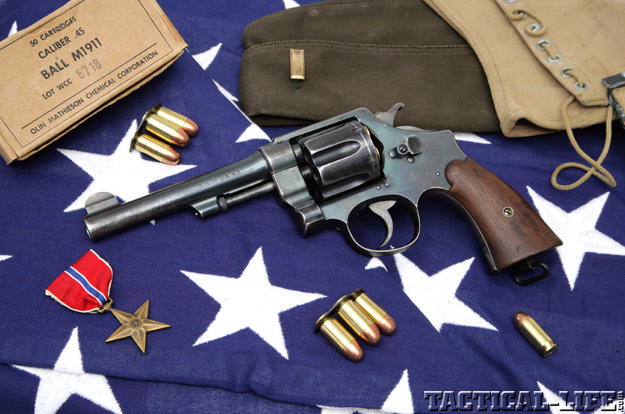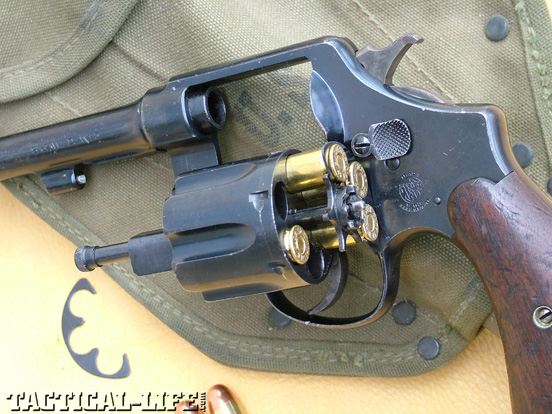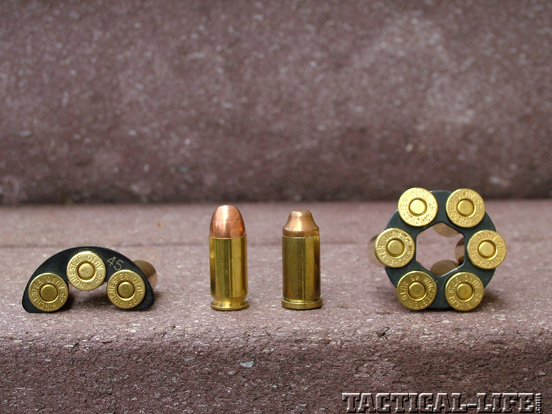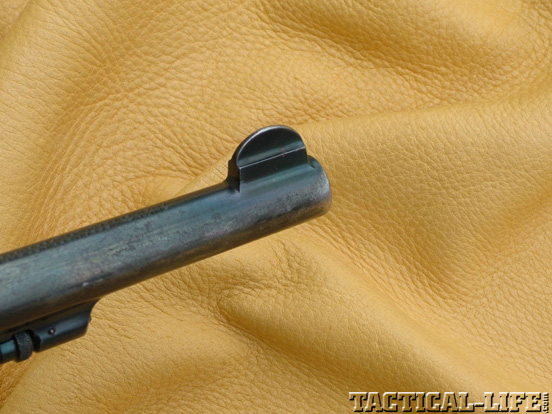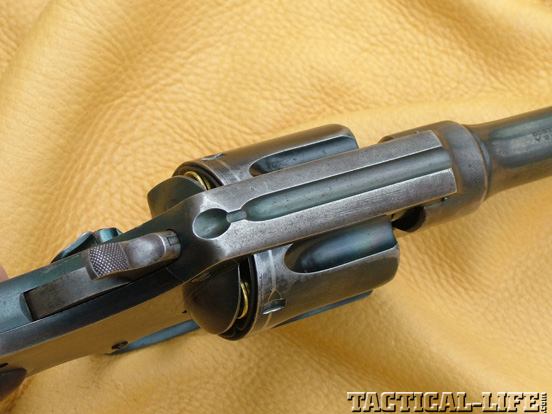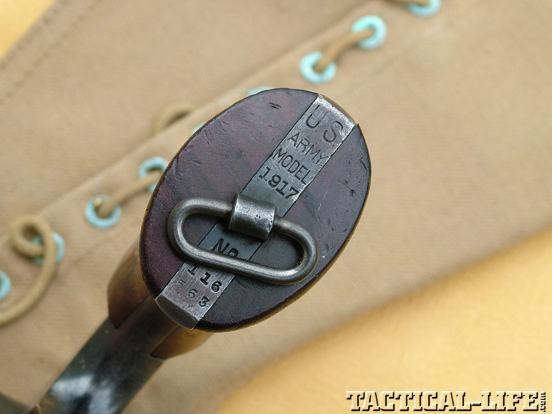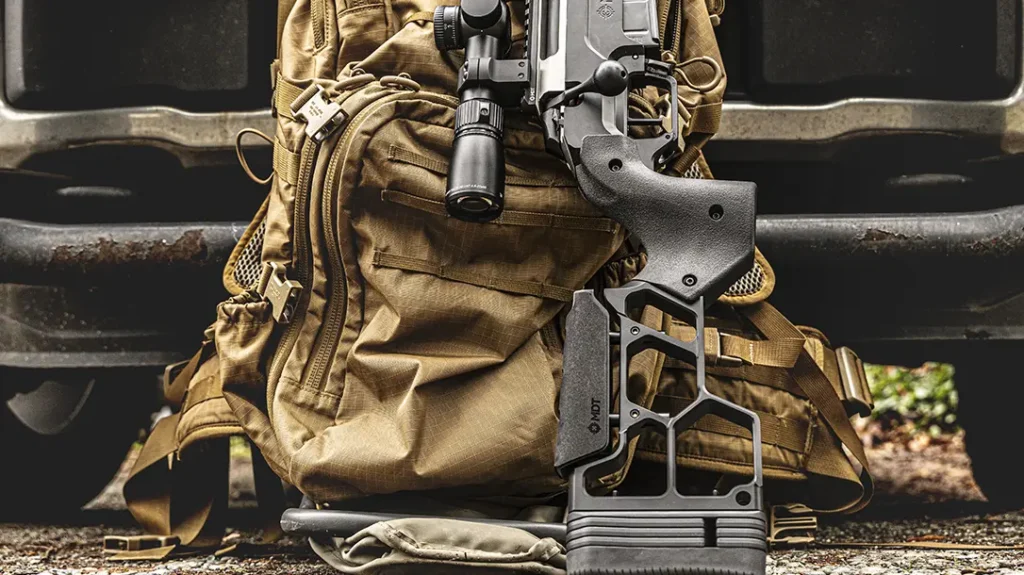It was some time in the 1950s. Even now, I distinctly remember when I accompanied my dad and his shooting buddy Jimmy Norris into downtown Sacramento, to a gunshop that specialized in military surplus arms. There, he and Jimmy sorted through barrels of surplus 1917 Smith & Wesson and Colt revolvers, each looking for that special gun to make his own. Although too young to participate, I remember the deliberateness each man exhibited as he tried the actions and checked the bores and chambers. Dad picked out a right nice S&W while Jimmy chose a Colt. Each paid less than $30 for his gun and, after compensating the shop-owner, left the store with his new purchase in hand. This was my first introduction to the S&W .45 Hand Ejector M1917, but it wouldn’t be my last.
History
Born out of the necessities of war, the .45 Hand Ejector M1917 was developed by S&W at the request of the U.S. government, to produce a revolver capable of firing the recently adopted .45 caliber Colt automatic-pistol cartridge. When in 1917 the U.S. entered what would come to be known as World War I, the U.S. Army was sorely lacking in issuable weapons. Only some 110,000 guns were on hand, which mainly consisted of M1911s and a few thousand Colt revolvers chambered for either the .38 or .45 Colt cartridges.
The problem wasn’t the gun itself. Smith & Wesson was already producing a revolver with a frame size that would easily accommodate the .45 ACP round: the .455 Hand Ejector Second Model, produced in quantity for the British Commonwealth. The problem was in getting a gun that had originally been designed around a rimmed cartridge, to function with the new, rimless government round. S&W solved this with the half-moon clip, a metal device designed to hold three of the rimless cartridges by their extractor groove, coupled with a slightly shorter revolver cylinder that allowed enough room to establish proper headspace when utilizing these clips. Not only did the half-moon clip solve the operational problem with the rimless round by giving the extractor star purchase to extract fired cases, but it also served to function as the first revolver speedloader. Smith & Wesson’s new gun was officially called the .45 Hand Ejector M1917 (known simply as the “Government Model” by S&W employees). Colt also produced a similar handgun so chambered, based on its large-frame New Service revolver: the M1917 Colt.
Advertisement — Continue Reading Below
Although Smith & Wesson did its best to meet the government’s production demand for the manufacture of the .45 Hand Ejector M1917, the demands of war and the need for armament led to the government temporarily taking control of S&W for the duration of WWI—the first time in history that S&W was not under the Wesson family’s management. The S&W plant manufactured upwards of 14,500 .45 Hand Ejector M1917s per month, with a total wartime production of some 163,476 units identified by their own serial numbers, beginning with “No. 1.” Control of the factory was returned to the Wesson family at war’s end.
With its military obligations fulfilled and supplies of wartime products exhausted, Smith & Wesson released a commercial version of the .45 Hand Ejector M1917 to the shooting public around 1920. The commercial model was identical to the military version but with a higher gloss blue, no military markings and checkered walnut grips. Although sales were moderate, the M1917 remained in the S&W line into the 1940s.
Production got a boost in 1937 when the Brazilian government ordered 25,000 M1917s. These were produced and delivered in 1938 and were identical to the U.S. Military model, except these had the Brazilian seal and the date of 1937 engraved on their sideplates. Fulfillment of the Brazilian contract brought the total production of the M1917 to 209,791 units. Although to my knowledge no new 1917s were produced for use by our military during WWII, many earlier production guns maintained by the military saw use during this conflict. Reintroduced after WWII in 1946, the .45 Hand Ejector M1917 continued in production until 1949, when it was officially discontinued, having a total manufacturing run of 210,782 guns. Although the .45 Hand Ejector M1917 was now officially history, it spawned the introduction of several new .45 ACP-chambered revolvers, such as the .45 Hand Ejector Model of 1950 Target and the fixed-sighted 1950 Military (later known as the Model 26 and Model 22, respectively), the .45 Hand Ejector Model of 1955 (more commonly known as the Model 25), and the Model 625, a stainless 45 ACP-chambered revolver still in production today.
Advertisement — Continue Reading Below
Gun Specifics
Based on what Smith & Wesson would ultimately designate as its N-frame size—the largest until its humongous X-frame introduced in 2003—the .45 Hand Ejector M1917 followed the general configuration of its 2nd Model Hand Ejector first offered in 1914. It wore a 5.5-inch, relatively lightweight barrel (no rib, underlug or enclosed ejector-rod housing) and had a half-moon front sight forged with its barrel. Its rear sight was a grooved affair, machined into its top strap, and, in military configuration, the grips were of smooth, uncheckered walnut. All exterior metal parts were blued, except the hammer and trigger, which were case-hardened. Military triggers were 0.265 inches wide and smooth-faced, while later commercial guns (and most of the Brazilian contract guns) wore serrated triggers. Hammer spurs were narrow and checkered. Cylinders were shortened by several thousandths of an inch over other existing large-framed S&Ws and head-spaced to accept two half-moon clips, each holding three rounds of ammo.
Smith & Wesson wisely chose to machine chambers with an internal shoulder that supported individually chambered rounds, allowing them to be fired without the use of a clip. However, when utilized in this manner, fired cases had to be plucked from chambers by way of fingernails or by pushing them out with a stick, pencil or other rod-like device from the front. First-run Colt 1917 revolvers didn’t have this feature, but Colt wisely added it early on, during production.
U.S. military guns were stamped “U.S. Army M1917” on the bottom of their grip frame and “United States Property” on the underside of their barrels. Each revolver, including later commercial versions and the Brazilian contract guns, wore a butt-mounted lanyard ring. Weight of this relatively svelte revolver was a nominal 36 ounces empty. As configured, it was a well-balanced, user-friendly arm. Of the three M1917s in my collection—one U.S. Military piece, one Brazilian contract pistol and one pretty, pristine, circa-1931 commercial model—all had unaltered double-action pulls in the 9.5- to 10.5-pound range and crisp, clean-breaking, single-action let-offs that ranged from a low of 3 pounds to a high of 4.5 pounds. The actions on these old warhorses were still tight and smooth-cycling, with barrel-cylinder gaps varying from a nice, snug 0.004 inches (in the Brazilian gun, oddly enough) to a fairly wide but still within spec 0.010 inches (in the early U.S. military gun). As a testament to their hardiness, all three still cycle smoothly and index properly, although some end-shake and side-to-side cylinder play is present in each piece, to one degree or another.
Advertisement — Continue Reading Below
Auto-Rim Alternative
Although the half-moon clip proved immensely successful in the M1917, with the war’s end and the revolver’s commercial release, many shooters had come to like the gun but not its clip. For recreational or target shooting, some found the clip tedious, and the occasional bent clip could cause functioning or ignition problems. The Peters Cartridge Company answered this call in 1920, with the introduction of a rimmed version of the .45 ACP round called the .45 Automatic Rim (.45 Auto Rim), which eliminated the need for the half-moon clip. Essentially, it was nothing more than a .45 ACP case equipped with a thick rim that was sufficient to properly headspace in the M1917. But the .45 Auto Rim was also loaded with a lead bullet, to reduce rifling wear over the full-metal-jacket bullets normally encountered in the ACP round. Since it didn’t have to function through a semi-auto pistol, the .45 Auto Rim round could be loaded with different, more effective bullet profiles like the semiwadcutter projectile, making for a more effective cartridge for use on small- to medium-sized game, with performance approaching the .45 Colt round.
Today, the .45 Auto Rim cartridge lives on, with factory loadings available from the likes of CorBon, Buffalo Bore and Black Hills ammunition—virgin brass can still be found from Remington and Starline ammunition. Standard .45 ACP reloading dies will work for the .45 Auto Rim round, but a shellholder specific to the .45 Auto Rim cartridge is required. Stubby but effective, the .45 Auto Rim adds further versatility to your M1917 or other .45 ACP-chambered wheelgun.
Range Time
I’ve owned the three M1917s in my Smith & Wesson collection for about the last 30 years. Except for one range outing with the commercial gun shortly after I acquired it around 1982, I don’t recall recall ever shooting them—now was as good a time as any.
Advertisement — Continue Reading Below
Since the 1917 was designed around a 230-grain, full metal-jacket loading of the .45 ACP, I decided to limit the range testing of my three 1917s to this one round. As I didn’t have any surplus hardball on hand, I settled on Winchester’s loading of this bullet in their white-boxed U.S.A. line. With my targets set out at 20 yards, I started with the circa 1931 commercial gun. I was truly pleased and more than a little surprised when all six rounds from the commercial 1917 hit dead center in the black of the 5.5-inch bullseye, forming a group measuring a scant 1.8 inches overall—that’s with hardball, mind you. I was even more surprised when the other two 1917s performed similarly, with the U.S. military gun producing groups in the 1.9-inch range and the Brazilian gun in the 3.3-inch range. Average velocities ran 807 feet per second (fps) for the commercial gun, 776 fps for the U.S. gun and 771 fps in the Brazilian contract gun. A quick six shots double-action out of the U.S. military gun, fired freestyle on an IPSC silhouette target from 7 yards out, formed a three-inch group perfectly centered in the A-zone, showing that this old warhorse was still up to the task.
Wrap Up
A great gun since its inception, the original M1917 can still be found on the used-gun market and make for a great home-protection piece, plinking pistol or woods-bumming companion. Modern examples of this iconic revolver available from Smith & Wesson include some recent releases of their Model 22, from their Classic Revolver line to the Model 325 and Model 625, both updated adjustable-sighted versions based on the M1917 concept. The Model 625 is today’s handgun of choice for anyone involved in the speed shooting sports with a revolver.
For More Information
Smith & Wesson Corp.
800-331-0852, smith-wesson.com
Advertisement — Continue Reading Below
